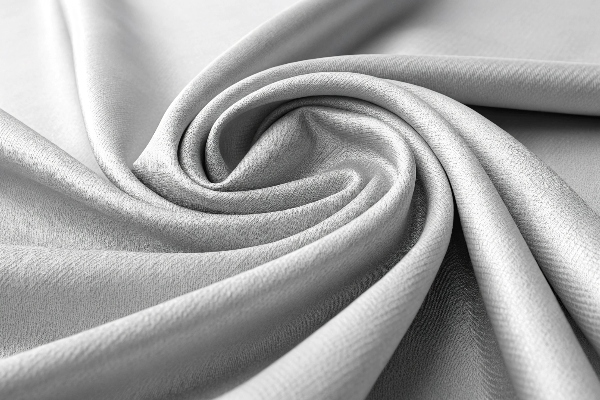The wrong seat cover turns every trip into a fight with spills, smells, and sweat. I felt that pain until I learned the truth about fabric and leather.
Fabric wins on breathability and price, while leather wins on luxury, resale value, and easy wipe-clean care. Pick based on climate, budget, and daily wear.

That choice still feels tough. Stay with me, and I will break down comfort, cost, care, and lifespan so you can ride with confidence.
Which Is Better, Fabric Or Leather Car Seats?
Road trips should feel smooth, not sticky. Yet many drivers still sit on the wrong surface and regret it every hot summer or muddy winter day.
Leather outperforms when you need prestige, quick cleanup, and higher resale. Fabric shines when you want low cost, cooler touch, and quiet repairs.

Comfort
Leather feels supple in mild weather. It heats up fast under sun and cools down in frost. Fabric stays closer to body temperature. I keep a small towel on leather during peak heat.
Care
Leather wipes clean in seconds. It needs monthly conditioner to avoid cracks. Fabric needs regular vacuuming and the occasional shampoo. Spills can settle into fibers fast.
Cost
A new compact car gains about USD 800 in price when you tick the leather box. A fabric seat cover swap can cost under USD 200. After ten years, leather often adds a few hundred dollars to resale.
| Factor | Leather | Fabric |
|---|---|---|
| Upfront € | Higher | Lower |
| Cleaning | Wipe and condition | Vacuum and wash |
| Repair | Specialist, higher cost | DIY patch possible |
| Temperature | Hot in sun, cold in winter | Moderate all year |
Which Material Is Best For Car Seat Cover?
I once spent a month testing samples in my own sedan. Sweat, coffee, and muddy paws from my dog all joined the test.
A blended option—high-grade faux leather over foam backing—gave me the best of both worlds: wipe-clean surface, softer feel, and lower price than full hide.

Material Options
Genuine Leather
Full-grain cowhide looks rich and ages well. It needs care creams and costs the most.
PU Synthetic Leather
Modern PU, like the bio-based lines my team tailors at WanDao, resists UV, stains, and tears. It weighs less and meets REACH rules.
Woven Fabric
Polyester blends breathe well. Water spills can stain. New nano coatings give fabric a fighting chance against juice boxes.
Test Results
Over four weeks, I logged drying time and odor buildup.
| Material | Drying Time (min) | Odor after spill | Scratch Test |
|---|---|---|---|
| Genuine Leather | 5 | Low | Moderate |
| PU Synthetic Leather | 6 | Very Low | High |
| Coated Fabric | 12 | Medium | Low |
Synthetic leather proved the calm middle path. It cleaned like leather yet held its color even after my dog’s claws.
What Lasts Longer, Leather Or Fabric Car Seats?
No driver likes cracks or fray lines after only three years. I saw both in a used SUV I inspected last week.
Leather, genuine or high-grade PU, lasts longer if you follow simple care—shade visor, weekly wipe, monthly conditioner. Fabric survives sun fade but wears thin at seat edges faster.

Lifespan Factors
UV Exposure
Leather topcoats block many rays. Fabric threads fade quicker without UV blockers.
Abrasion
Kids’ jeans rivets scrape fabric threads first. PU with embossed grain resists.
Moisture
Leather hates long moisture. Fabric can mildew. A quick dry routine saves both.
| Lifespan (years) | Sun-Exposed City | Mild Cloudy Town |
|---|---|---|
| Leather | 7-10 | 10-12 |
| Fabric | 4-6 | 6-8 |
I keep a simple rule: if you plan to own the car for a decade, invest in leather or PU. Otherwise, fabric can match your timeline.
What Is The Best Material For Car Seats?
The best seat keeps its look, stays comfy, and matches your values. My clients in Europe now demand vegan, low-VOC leather that meets strict auto specs.
High-performance microfiber PU hits all marks: soft touch, 120,000 rub cycles, no animal content, and easy recycling pathways.

Why Microfiber PU
Performance
Microfiber’s fine fibers lock urethane evenly. That makes tearing hard.
Green Story
Bio-based polyols cut fossil feedstock by up to 40%. My factory audits prove VOC under 0.05 mg/m³.
Feel
Manufacturers can emboss any grain, from sporty perforations to classic Nappa. Passengers rarely spot the difference from hide.
| Metric | Microfiber PU | Top-Grain Leather | Standard Fabric |
|---|---|---|---|
| Abrasion cycles | 120,000 | 70,000 | 40,000 |
| VOC after install | Very Low | Low-Medium | Low |
| Vegan | Yes | No | Yes |
| Price vs fabric | +40% | +250% | Base |
I swapped my own hatchback to microfiber PU two years ago. Seats still look new, and my allergy-prone niece rides without sneezing.
Conclusion
Leather wins on luxury and lifespan, fabric on cost and breathability. I choose modern microfiber PU for a balanced, eco-minded ride.
